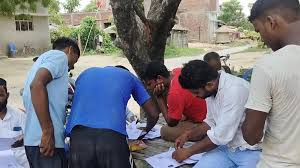Under 5% voters dead, shifted or also listed elsewhere: Election Commission

The Election Commission of India (ECI) has clarified that less than 5% of the country’s voter list entries may have errors. These mistakes mostly come from voter deaths, people moving to new locations, or duplicate registrations. This announcement comes amid debates over the accuracy of electoral rolls, especially with key elections approaching.
ECI Reaffirms Voter List Accuracy
The ECI said that ensuring clean and correct electoral rolls remains a top priority. It added that routine deletions and additions help maintain accuracy. Mistakes due to deaths, shifting voters, or duplicates are inevitable but limited to a small fraction.
Officials use a system of constant updates to reduce these issues. According to the ECI, this effort helps protect the fairness of India’s democratic process.
How the Voter List Gets Updated
The Election Commission uses multiple methods to keep the voter rolls clean:
- Annual Revisions: Every year, new voters are added, and the names of the deceased are removed. Errors get corrected through a summary revision process.
- Booth Level Officers (BLOs): BLOs collect information from voters in their area. They verify identities and help people fix or update their records.
- Aadhaar Linkage: Linking Aadhaar with voter IDs helps spot duplicate entries. Though voluntary, it supports better data accuracy.
- Digital Verification Tools: The ECI uses advanced technology to match voter records across states. This helps detect suspicious or repeated entries.
Opposition Raises Doubts, ECI Responds
Several opposition parties have questioned the accuracy of the voter rolls. They claim the lists still include names of deceased people or voters registered in multiple constituencies.
In response, the ECI has invited evidence-backed complaints. Officials say their internal audits and deletion drives keep such errors under control. One senior official said, “We encourage political parties to report verified cases. We’re ready to take action on factual complaints.”
Public Role in Cleaning Voter Lists
The Commission also urged the public to help keep voter data updated. Citizens can check their details on the National Voters’ Service Portal (NVSP) or by contacting their local BLOs.
People can apply to correct errors, delete old entries, or register new voters. Campaigns like “My Vote Matters” and “Matdata Mahotsav” aim to involve more citizens in the electoral process, especially young voters.
Tech Tools Strengthen the Process
The ECI is exploring new technologies to reduce errors further. It is working on:
- Blockchain Voting: This tech could allow secure remote voting for those who migrate for jobs or studies.
- Remote EVM Pilots: The ECI has tested electronic voting machines for non-resident voters.
- Data Analytics: The Electoral Roll Purification and Authentication Programme (ERPAP) uses analytics to detect duplication and errors.
These tools support the goal of building a transparent and modern election process.
Why Clean Voter Lists Matter
A clean voter list ensures that every eligible person gets to vote—and only once. Even a small number of errors can raise doubts about fairness.
The ECI says it keeps the error rate below 5% despite India’s huge population. With 96 crore registered voters, this is a major task. Yet, constant upgrades and public involvement help make the process stronger.
Looking Ahead
India’s democracy depends on trust in the electoral system. As the country heads into several key state and national polls, voter list accuracy is crucial.
The ECI is confident in its data, systems, and staff. It also invites all stakeholders—including political parties and citizens—to be part of the effort. Clean voter rolls are not just the ECI’s job—they’re a shared democratic responsibility.






